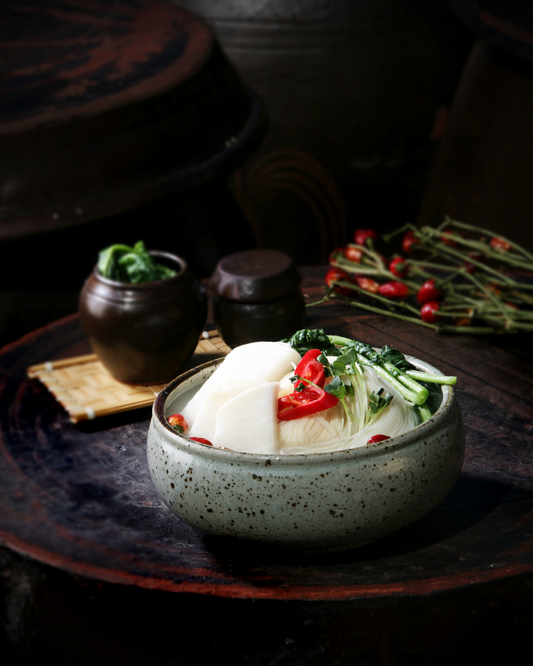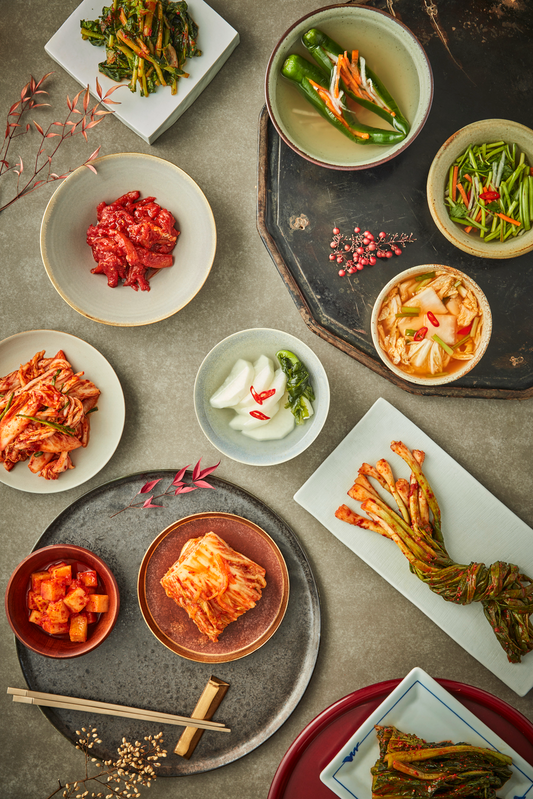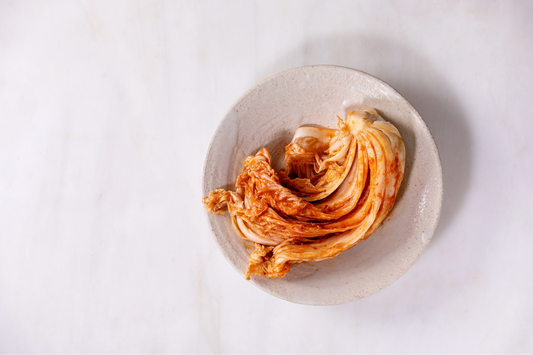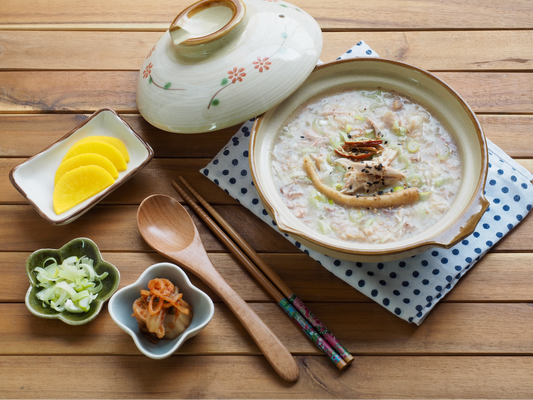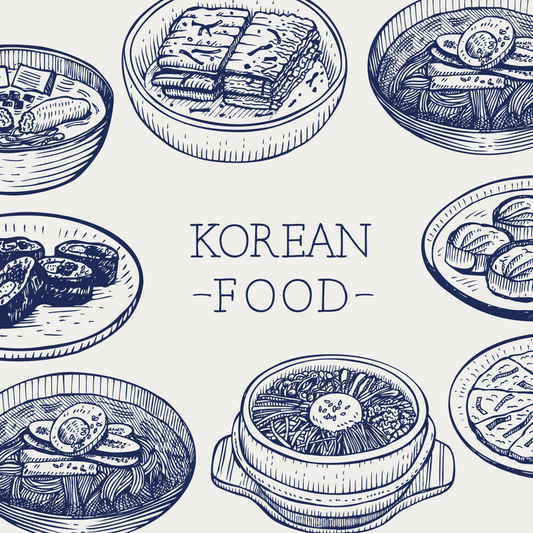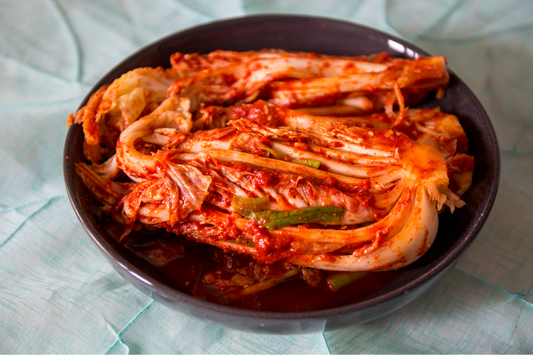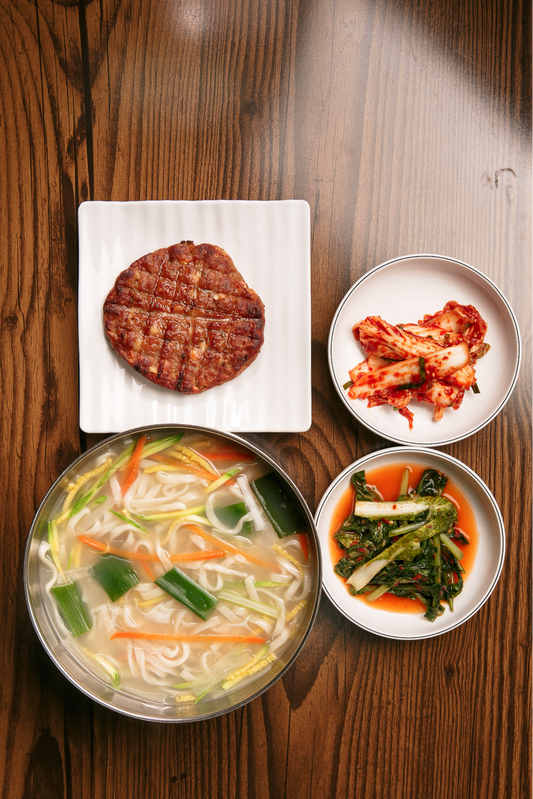Ever wondered about the lesser-known kimchi varieties? Seokbakji, a traditional Korean radish kimchi, is a hidden gem. It offers unique flavors and textures, unlike kkakdugi, which is made with cubed radish.
Seokbakji's history dates back to the 1700s and 1800s. It was made in the Royal Palace before Kimjang season. The name "Seokbakji" comes from "Seok" (to mix) and "ji" (kimchi). It features thinly sliced radish quarters, making it visually appealing and flavorful.
The seasoning for seokbakji and kkakdugi is similar. It includes Korean red pepper flakes, fish sauce, garlic, and ginger. But, the cutting techniques differ, leading to unique textures and tastes. Seokbakji's thin slices allow flavors to penetrate the radish quickly, perfect for enjoying while waiting for main Kimjang kimchi.
Learn about the differences between seokbakji and kkakdugi. Discover how to make seokbakji at home. Also, find out the health benefits of adding this delicious kimchi to your diet. Embrace Korean tradition with seokbakji and take your kimchi game to the next level!
Key Takeaways:
- Seokbakji is a traditional Korean radish kimchi with thinly sliced radish quarters, offering a unique taste and appearance compared to kkakdugi.
- Seokbakji has a rich history, dating back to the 1700s and 1800s when it was prepared in the Royal Palace before Kimjang season.
- While the seasoning ingredients are similar, the different cutting techniques result in distinct textures and flavors between seokbakji and kkakdugi.
- Making seokbakji at home is easy and allows you to enjoy its benefits while waiting for the main Kimjang kimchi to be ready.
- Incorporating seokbakji into your diet offers numerous health benefits, thanks to the nutritious ingredients used in the recipe.
Definition of Seokbakji Kimchi
Seokbakji is a special type of korean traditional kimchi. It shows Korea's rich food culture. This fermented food is made by pickling radish in a tasty brine. Then, it's mixed with a spicy paste for a mix of tangy, spicy, and savory tastes.

Basic description of Seokbakji Kimchi
To make Seokbakji Kimchi, radish is cut into 1/2-inch thick disks and quartered. This gives it a flat triangular shape. Unlike other kimchi, like Kkakdugi, Seokbakji has a unique shape.
The seasoning paste includes gochugaru, garlic, ginger, jeotgal, and cooked rice paste. These ingredients add depth and complexity to the flavor.
Differences between Seokbakji Kimchi and other types of kimchi
Seokbakji is special among Korea's over 200 kimchi types. It has a unique texture and taste. Unlike Baechu Kimchi or Kkakdugi, Seokbakji's radish pieces offer a satisfying crunch and refreshing flavor.
The longer fermentation makes Seokbakji's sauce thicker. This is because less liquid is produced during fermentation.
Cultural background and characteristics of Seokbakji Kimchi in Korean cuisine
Seokbakji Kimchi is a key part of Korean cuisine. It has royal culinary roots. It's often served with dishes like seolleongtang, balancing flavors and textures.
As a fermented food, Seokbakji is good for digestion and gut health. Its importance in Korean food culture shows the nation's commitment to its culinary heritage. This heritage is now recognized worldwide.
Seokbakji Kimchi is a testament to the ingenuity and deliciousness of Korean cuisine, offering a distinct flavor experience that sets it apart from other kimchi varieties.

Ingredients and Benefits
Seokbakji kimchi is a nutritious and tasty side dish. It's packed with health benefits thanks to its ingredients. Korean radish, the main ingredient, is full of dietary fiber. This fiber helps with digestion by keeping bowel movements regular and supporting a healthy gut.
Korean radish also has enzymes that aid digestion. These enzymes help break down food better.
Probiotics and Immune System Support
Seokbakji kimchi is rich in probiotic bacteria. These beneficial microbes are made during fermentation. They help keep the gut flora balanced and boost the immune system.
A 2019 study found that kimchi can enhance the immune system. This makes it a great addition to a healthy diet.
Anti-Inflammatory and Metabolism-Boosting Properties
Gochugaru, the red pepper flakes, contain capsaicin. This compound fights inflammation and boosts metabolism. Capsaicin can help reduce body inflammation and aid in weight management by speeding up metabolism.
Garlic and ginger, common in seokbakji kimchi, have antimicrobial and antioxidant effects. These benefits contribute to overall health and well-being.
Nutrient-Dense and Low in Calories
Seokbakji kimchi tastes great but is low in calories, with just 23 calories per cup. It's rich in iron, folate, and vitamins B6 and K. A 1-cup serving gives about 21% of the daily iron, 20% folate, 19% vitamin B6, and 55% vitamin K.
These nutrients are vital for healthy blood, the nervous system, and bone health.
In summary, seokbakji kimchi is a nutritious and tasty side dish. It offers many health benefits, from improving digestion to boosting immunity and providing essential nutrients.

Recipe
Making seokbakji at home is a fun and rewarding experience. It lets you customize the flavors and enjoy the real taste of Korean kimchi. With the right ingredients and a bit of patience, you can make a tasty batch of seokbakji. It will last for weeks in your fridge.
List of ingredients
To make seokbakji, you need these ingredients:
- 2 pounds of Korean radish (mu)
- 1/4 cup of coarse sea salt
- 4 cups of water
- 1/2 cup of gochugaru (Korean red pepper flakes)
- 4 cloves of garlic, minced
- 1 inch of ginger, grated
- 2 tablespoons of fish sauce or salted shrimp
- 1 tablespoon of sugar
- 2 tablespoons of cooked rice, mashed
Cooking process
Start by cutting the Korean radish into 1/2-inch thick disks. Then, quarter them. In a big bowl, mix the sea salt with water to make a brine. Add the radish to the brine and soak for 2-3 hours until it's soft. Drain the radish and throw away the brine.
In a blender, mix the garlic, ginger, salted seafood, mashed rice, and a bit of water. Blend until smooth. In another bowl, mix the gochugaru, sugar, and fish sauce. Add the blended paste to this mix and stir well to make the seokbakji seasoning paste.
In a big mixing bowl, put the drained radish with the seasoning paste. Mix well with gloves to coat the radish evenly. Pack the radish tightly into an airtight jar, pressing out air pockets.
Storage method
Let the seokbakji ferment at room temperature for 2-3 days. You'll see bubbles and smell a sour aroma, which means it's fermenting right. Once it's sour enough, put the jar in the fridge.
Seokbakji can stay in the fridge for weeks, getting tastier over time. Always use a clean utensil when taking some out to keep it fresh. Enjoy your homemade seokbakji as a healthy side dish for many meals.

Tips and Cooking Methods
Seokbakji is a versatile ingredient in Korean cuisine. It has a crunchy texture and tangy flavor. This makes it great for many dishes, from quick snacks to main courses.
Various dishes and uses of Seokbakji Kimchi
Seokbakji is often enjoyed as a side dish. It pairs well with rich foods like samgyeopsal and jokbal. It's also good in kimchijeon, bokkeumbap, and stir-fries.
These dishes let seokbakji's flavors mix with others. This creates a tasty and balanced meal.
Recommendations for foods that pair well with Seokbakji Kimchi
Try wrapping seokbakji in steamed pork belly for a tasty snack. It's also great on bibimbap. The combination of pork and kimchi is perfect.
Seokbakji goes well with grilled fish or raw seafood. Its refreshing taste balances the richness of the fish. Add it to stews or soups just before serving to keep it crunchy.
FAQ
What is the main difference between seokbakji and kkakdugi?
Seokbakji has thin sliced radish quarters, while kkakdugi uses cubed radish. This makes seokbakji flat and triangular, with a unique texture.
What are the key ingredients in seokbakji?
Seokbakji includes Korean radish, gochugaru, garlic, ginger, jeotgal, and rice paste. These mix to create a spicy seasoning paste for the radish.
How does seokbakji benefit digestive health?
Seokbakji aids digestion with its fiber-rich Korean radish. It also has enzymes and probiotics from fermentation. These support gut health and immunity.
What is the traditional cultural significance of seokbakji?
Seokbakji is deeply rooted in Korean history, especially in the Royal Palace. It was made before Kimjang, the kimchi season, when radishes were ready. It was enjoyed while waiting for the main kimchi.
How long does it take to make seokbakji at home?
Making seokbakji at home takes 2-3 days. It involves brining radish, making the seasoning paste, and fermenting it. It's ready when it bubbles and tastes sour.
What are some dishes that pair well with seokbakji?
Seokbakji goes well with rich Korean dishes like samgyeopsal and jokbal. It's also great in savory pancakes, fried rice, or stir-fries.
How long can I store seokbakji in the refrigerator?
Store seokbakji in an airtight container in the fridge for weeks. The flavors will get better over time, keeping it fresh for longer.

